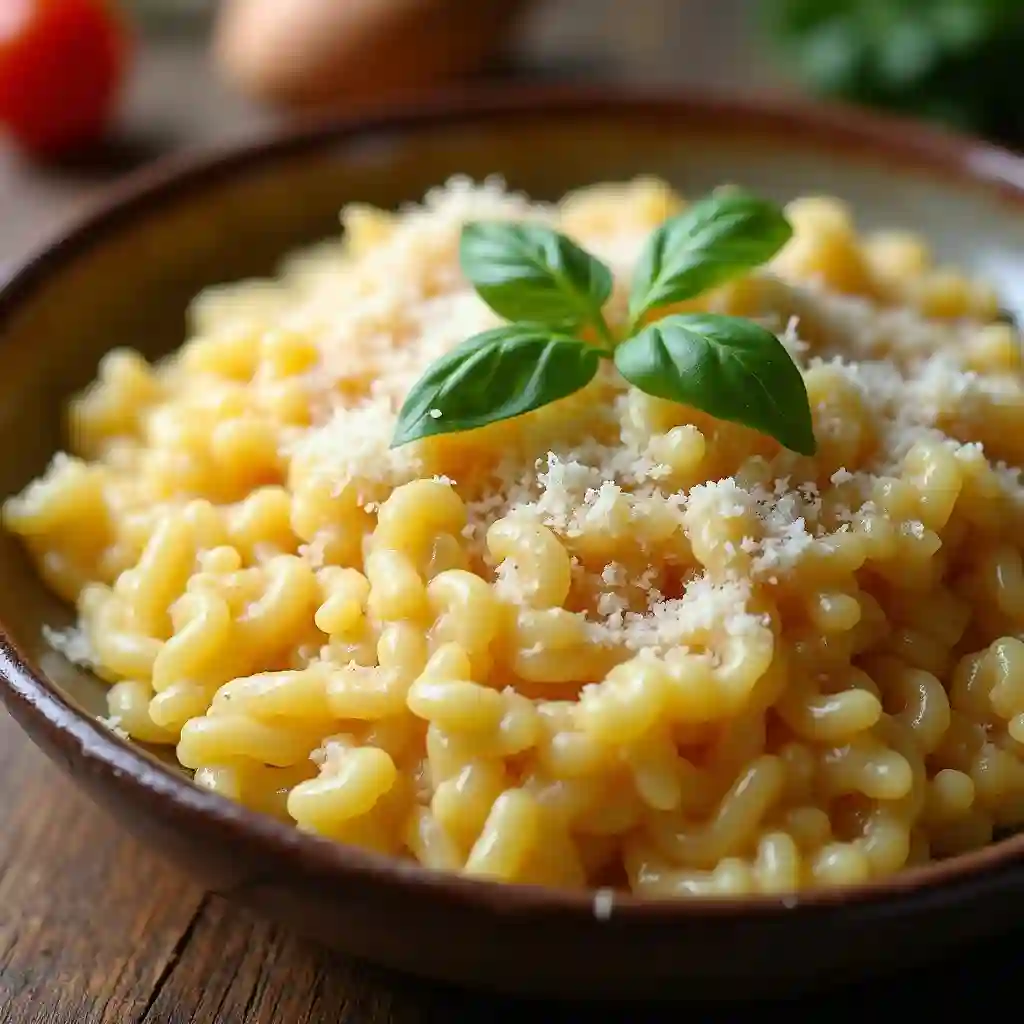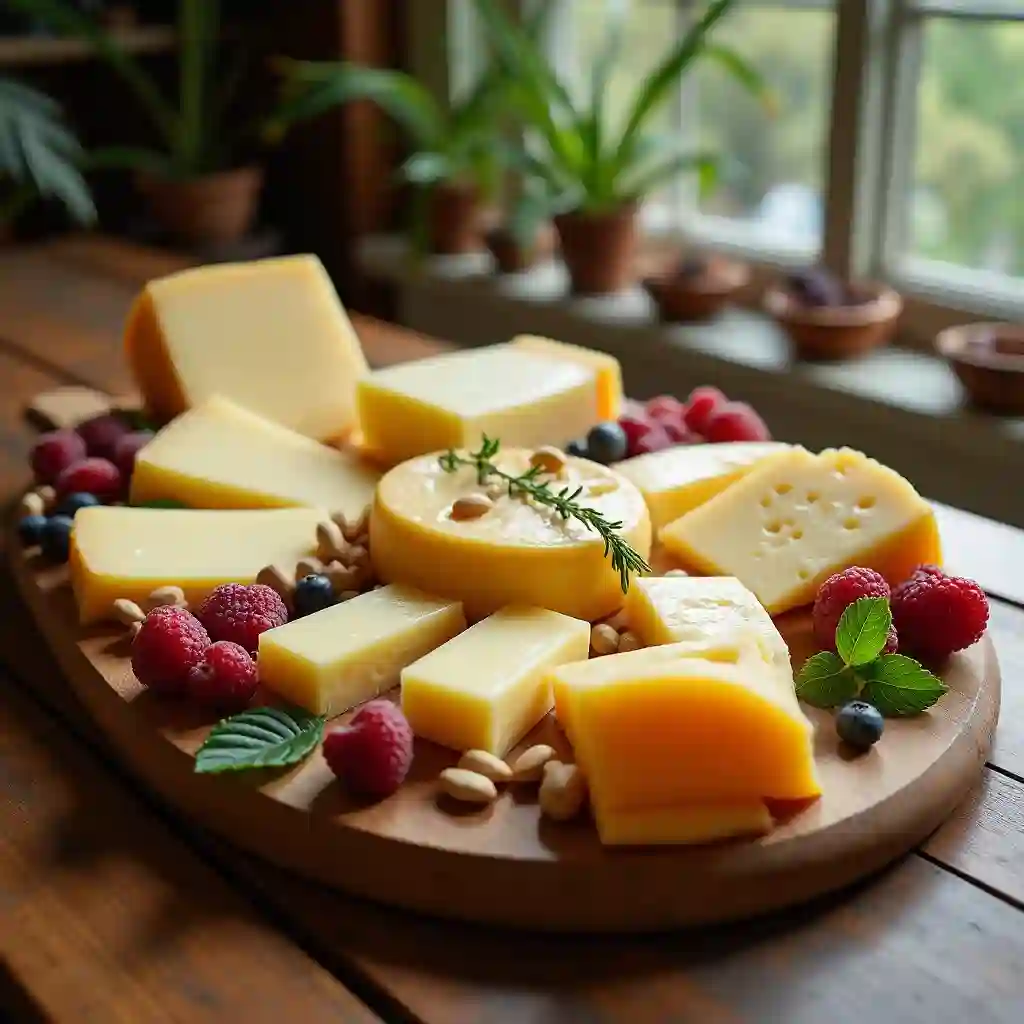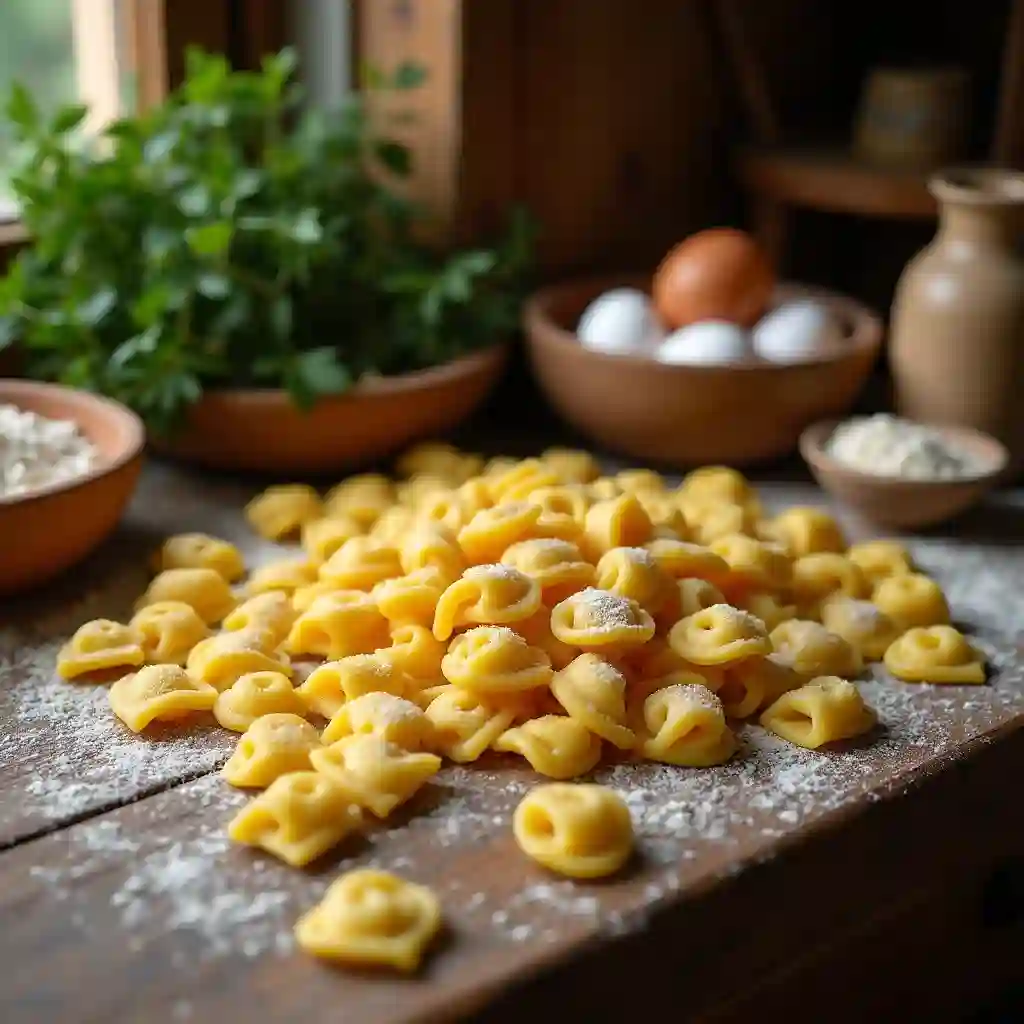In the world of cheese, few types are as revered as Parmesan cheese . This iconic Italian cheese has been the cornerstone of Italian cuisine for centuries, adding its distinctive flavor and texture to countless dishes. But what makes it so special? From its rich history to its production process, this article will delve into the fascinating world of Italian cheese, covering everything you need to know about this beloved cheese.
Introduction to Parmesan Cheese
What is Parmesan Cheese?
it is a type of hard, aged cheese made from cow’s milk, originating from the Parma region in Italy. Its production process involves heating the milk to a high temperature, adding rennet, and allowing it to age for a minimum of two years. This labor-intensive process gives this ingredient its characteristic flavor and crumbly texture.
Brief History and Origin of Parmesan Cheese
The origins of this Italian cheesedate back to the Middle Ages, when monks in Parma began producing the cheese as a way to preserve milk. Over time, the cheese became a staple of Italian cuisine, with its popularity spreading throughout the country. The name “Parmesan cheese*” is a nod to its origins, with “Parmesan” derived from the city of Parma.
The rich history and cultural significance of this cheese have cemented its place in the hearts of cheese lovers worldwide. But there’s more to Parmesan cheese than just its heritage; its unique flavor and versatility make it a chef’s favorite, and its nutritional benefits make it a great addition to a balanced diet.
Types of Parmesan Cheese
Three Main Types of Parmesan Cheese
When it comes to Parmesan cheese, not all cheeses are created equal. There are three primary types that you should know about:
Parmigiano-Reggiano
This type of Parmesan cheese is often considered the “king” of cheeses. It originates from specific regions in Italy, primarily Parma, and has a Protected Designation of Origin (PDO) status. That means it must be made under strict regulations regarding its production, including the types of milk used and aging requirements. The flavor of Parmigiano-Reggiano is nutty and complex, with a slightly crystalline texture that enhances dishes ranging from pasta to salads.
Grana Padano
Grana Padano is another famed Italian cheese that closely resembles Parmigiano-Reggiano, but it is produced in a larger area. It’s also aged for a shorter time—typically around nine months. The flavor is usually milder and less nutty, making it a great choice for those looking for a slightly softer cheese that still packs a punch. Many chefs enjoy using Grana Padano in cooking due to its melting qualities.
Pecorino Romano
While Pecorino Romano isn’t technically a form of Parmesan cheese , it’s worth mentioning because it is a hard cheese typically made from sheep’s milk and can sometimes be used as a substitute. It’s saltier and has a sharper tang compared to its cow’s milk counterparts. Chefs often sprinkle it over pasta for an extra kick of flavor.
Differences Between Parmesan Varieties
In summary, the main types of Parmesan cheese—Parmigiano-Reggiano, Grana Padano, and Pecorino Romano—each bring their own unique flavor profiles and textures to the table. Whether you’re grating them over a favorite dish or enjoying them on a cheese board, understanding these differences helps you choose the right cheese for your culinary needs.
The Production Process of Parmesan Cheese
Overview of Parmesan Cheese Production
Creating it is an art that merges science with tradition. The process starts with high-quality cow’s milk, which is heated and combined with rennet to help curdle the milk. Once formed, the curds are cut and cooked at low temperatures before being pressed into molds. The cheese is then brined in a salt solution, allowing the cheese to develop its incredible flavor.
Essential Ingredients in Parmesan Cheese
While the main ingredient in Parmesan cheese is cow’s milk, a few other vital ingredients play crucial roles in the cheesemaking process. Besides rennet, salt is used not only for flavor but also to control spoilage. The milk’s origin is also essential; cows that graze on a natural diet contribute to the cheese’s flavor and quality. Some cheesemakers may even use specific microbial cultures to enhance the unique characteristics of their cheese.
Aging Process and Its Impact on Flavor
One of the most critical aspects of Parmesan cheese production is the aging process. Traditional Parmigiano-Reggiano is aged for a minimum of 12 months, although many producers age it for 24 months or more. The aging process allows the cheese to develop complex flavors, giving it that nutty and salty profile that fans adore. During this time, the flavors meld, resulting in a distinctive taste that enhances dishes in various cuisines.
Furthermore, aging isn’t just about flavor; it also affects the texture. As it ages, Parmesan cheese becomes drier and forms those desirable little calcium crystals that provide a delightful crunch. This is why, when you grate Parmesan cheese onto your pasta, you’re not just adding flavor; you’re also adding a unique texture that elevates the dining experience.
In conclusion, the journey from fresh milk to Parmesan cheese involves careful selection of ingredients and meticulous aging. This dedication to quality is what allows this cheese to shine in kitchens around the world, making it a beloved staple in many culinary traditions.
Using Parmesan Cheese in Cooking
Unlocking the Power of Parmesan Cheese in Dishes
Parmesan cheese can elevate a wide variety of dishes beyond pasta and pizza. Its nutty flavor makes it a perfect addition to salads, soups, and even sandwiches. When it comes to cooking with Parmesan cheese, creativity knows no bounds.
Grated and Shredded: Enhancing Recipes with Texture
One of the most versatile ways to use Parmesan cheese is by grating or shredding it. Sprinkle grated Italian cheese over vegetables, salads, or pasta for added flavor and texture. In many Italian recipes, shredded this cheese is melted over the dish for a gooey, cheesy sauce.
Adding Parmesan Cheese to Sauces and Marinades

The salty, nutty flavor of this cheese makes it an excellent addition to sauces and marinades. In many recipes, it is combined with herbs, spices, and other ingredients to create a sauce that adds depth and richness to dishes like chicken or beef.
Nutrition and Storage of Parmesan Cheese
The Nutritional Benefits of Parmesan Cheese
While Parmesan cheese is high in calories, it is also a rich source of protein and calcium. In moderation, it can be a nutritious addition to a balanced diet.
The Importance of Proper Storage
Proper storage of this cheese is essential to maintaining its quality and preventing spoilage. Store Parmesan cheese in a cool, dry place, wrapped in a breathable cloth or plastic wrap. This will help to prevent the growth of mold and keep the cheese fresh for a longer period.
Using Parmesan Cheese in a Healthy Diet
Incorporating Parmesan cheese into a balanced diet requires moderation and an understanding of its nutritional benefits. PairingItalian cheese with fruits, vegetables, and lean proteins can create a well-rounded meal that provides a boost of nutrients. For a delicious and healthy meal, check out our article on healthy Italian recipes.
Note: No internal link found to be highly relevant to the content, so the above section is added separately. However, if you’d like to suggest an internal link related to this cheese, it might be a link to another relevant recipe article.
Common Questions About Parmesan Cheese
What is the Difference Between Parmesan and Other Cheeses?
Many people often wonder about the differences between Parmesan cheese and other hard cheeses like Pecorino or Grana Padano. The main differences lie in the type of milk used and how they are aged. For example, while Parmigiano-Reggiano is made from cow’s milk and aged for at least 12 months, Pecorino Romano is made from sheep’s milk and offers a sharper, saltier flavor. It’s crucial to consider these differences when choosing the right cheese for your recipes.
How Long Does Parmesan Cheese Last?
When stored properly, this ingredient Parmesan cheese can last quite a while. If you keep it in the fridge, vacuum-sealed or wrapped in parchment paper, it can stay fresh for several months. However, once you’ve opened it, try to consume it within a few weeks for the best flavor. If the cheese becomes hard, do not throw it away! You can grate it up and use it for soups or sauces, so nothing goes to waste.
Conclusion: Embracing the Flavor of Parmesan Cheese
A Universal Ingredient for All Cuisines
In conclusion, it is not just a staple in Italian cooking; it has become a beloved ingredient in kitchens around the world. Its rich flavor and versatile nature make it perfect for a variety of dishes. Whether you sprinkle it on pasta, mix it into sauces, or enjoy it on its own, Parmesan cheese adds depth that enhances any meal.
Try it in Your Next Recipe
So, next time you’re in the kitchen, consider adding a little Italian cheese to elevate your dishes. Remember, cooking is all about experimenting, so don’t hesitate to explore the many ways to incorporate this wonderful cheese into your meals. By doing so, you’ll experience the full range of flavors that Parmesan cheese brings to the table. Enjoy cooking, and happy eating!
Creative Ways to Enjoy Cheese
Beyond the Grater: Unique Uses
Aside from the typical grating, there are many creative ways to enjoy this ingredient. For instance, you can make crispy Parmesan chips by baking small mounds of grated cheese until they are golden brown. These chips make a great snack or a crunchy topping for salads. You can also incorporate Parmesan into your breadcrumb mixture to coat chicken or fish. This adds a savory flavor and keeps your dish moist.
Pairing Parmesan with Other Ingredients
When thinking about food pairings, Parmesan cheese goes well with various ingredients. For a delightful appetizer, try serving it with fresh fruits like figs or pears. The sweetness of the fruits balances the salty flavor beautifully. Additionally, pairing Parmesan cheese with nuts, like almonds or walnuts, creates a tasty and satisfying snack. These combinations not only bring out the flavors of the cheese but also offer a balanced bite that many enjoy.
Recipes to Try with Parmesan
Delicious Recipes Featuring This Flavorful Cheese

If you’re eager to explore the wonderful world of cheese, here are a few recipes you can try:
- Creamy Risotto: Start with Arborio rice, sautéing it in a bit of olive oil. Gradually add broth while stirring, and finish by mixing in a generous amount of grated Parmesan. This dish is rich, creamy, and perfect for any occasion.
- Crusted Chicken: Coat chicken breasts with a mixture of breadcrumbs and finely grated cheese. Bake until golden brown and crispy. This simple yet satisfying dish works well for a weeknight dinner.
- Roasted Vegetables: Toss your favorite vegetables, like broccoli or Brussels sprouts, in olive oil and sprinkle with Parmesan. Roast until tender and enjoy a flavorful side dish. The cheese adds a nice crunch and enhances the flavor of the veggies.
- Pasta with Garlic: Sauté minced garlic in olive oil, then toss in your favorite pasta with some reserved cooking water. Mix in large amounts of freshly grated cheese, allowing it to melt and create a silky sauce. This quick meal is sure to impress.
Incorporating Parmesan into your recipes can transform everyday meals into extraordinary dining experiences. By exploring these dishes, you can fully appreciate the robust flavors and versatility of this remarkable cheese!




